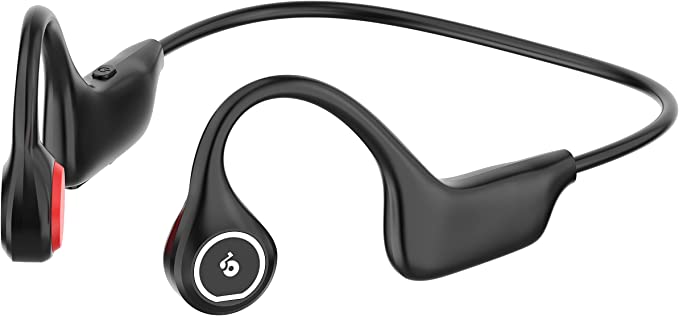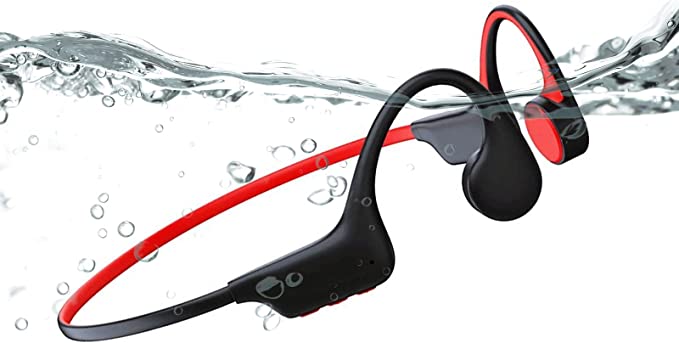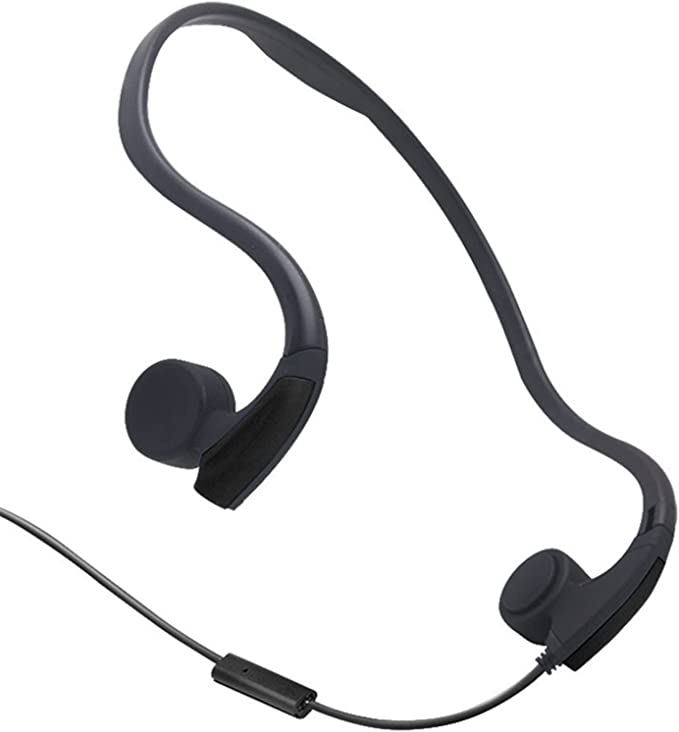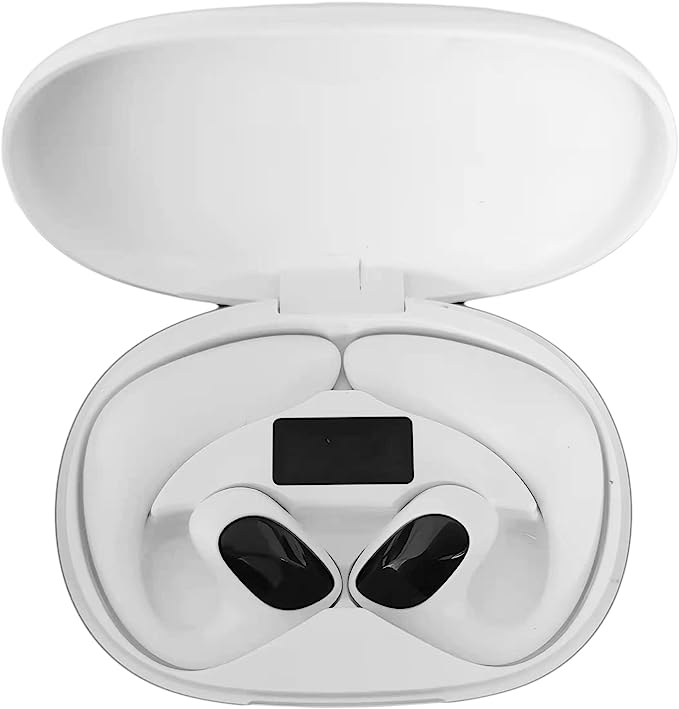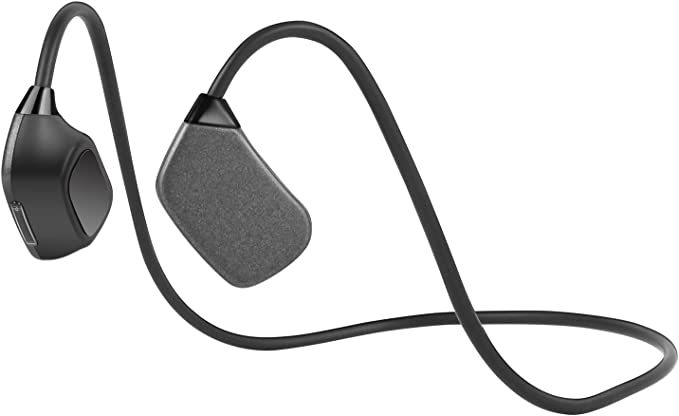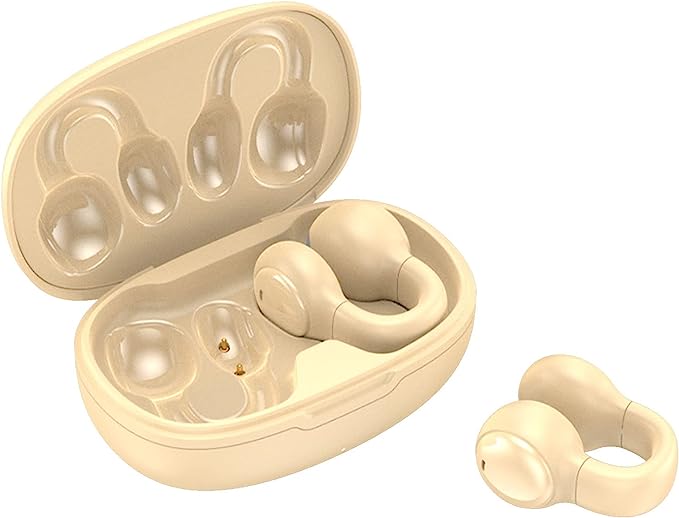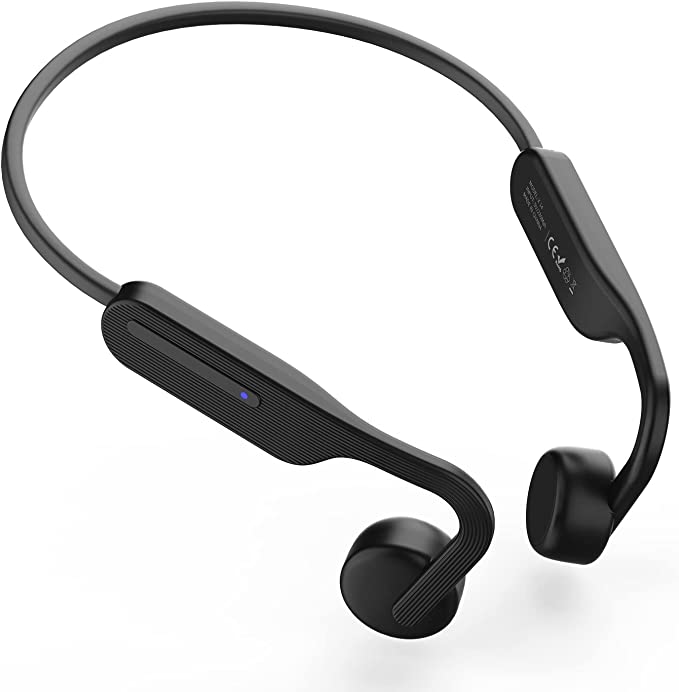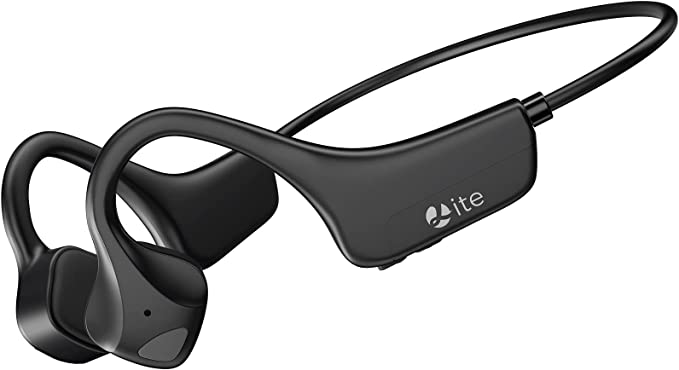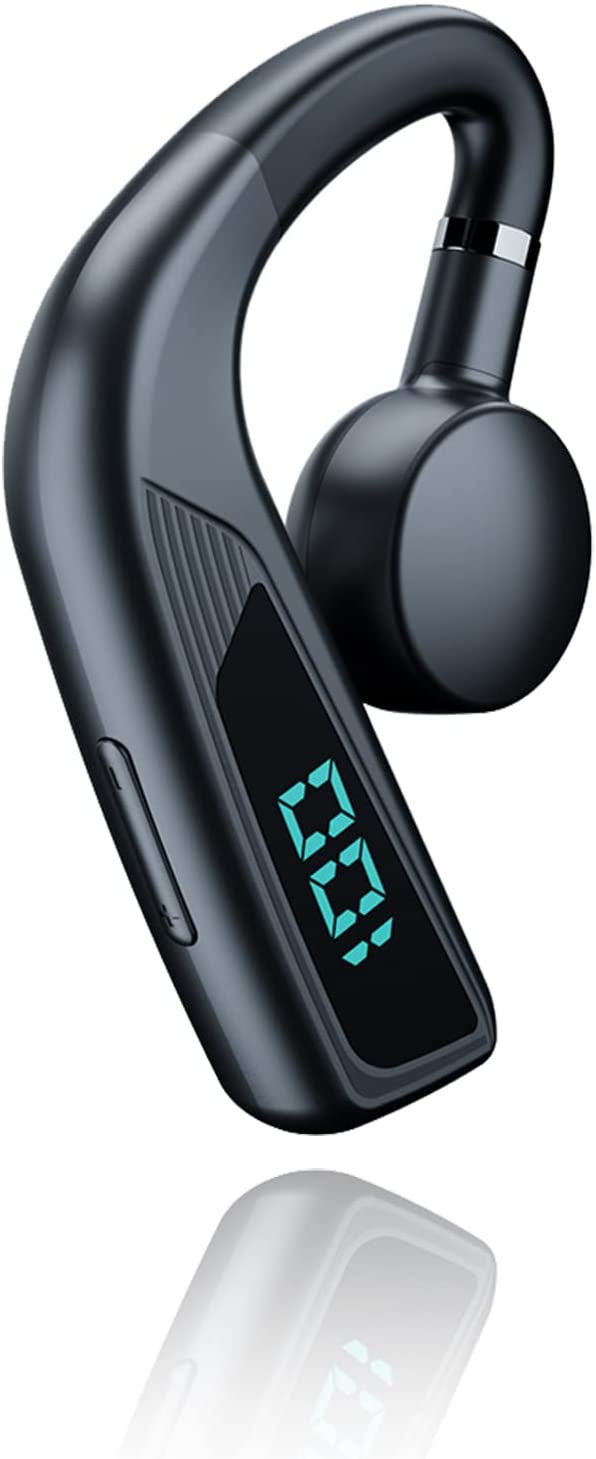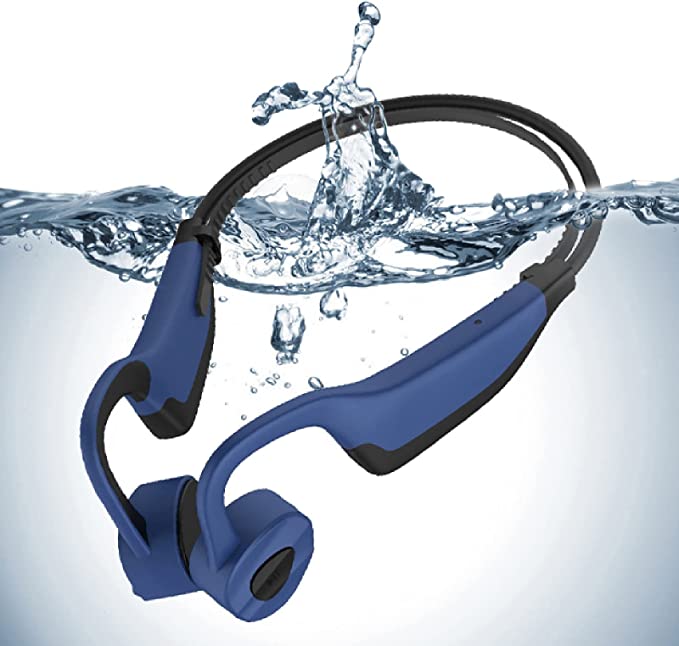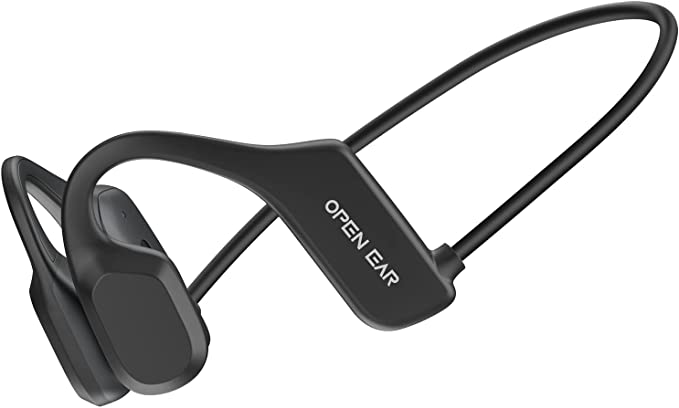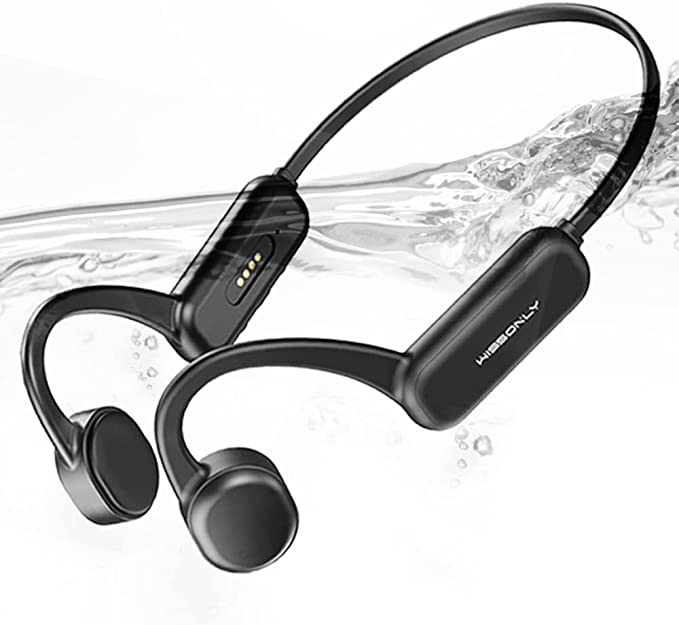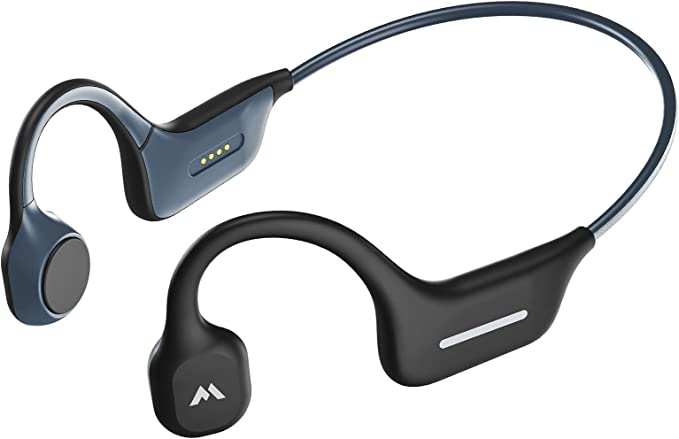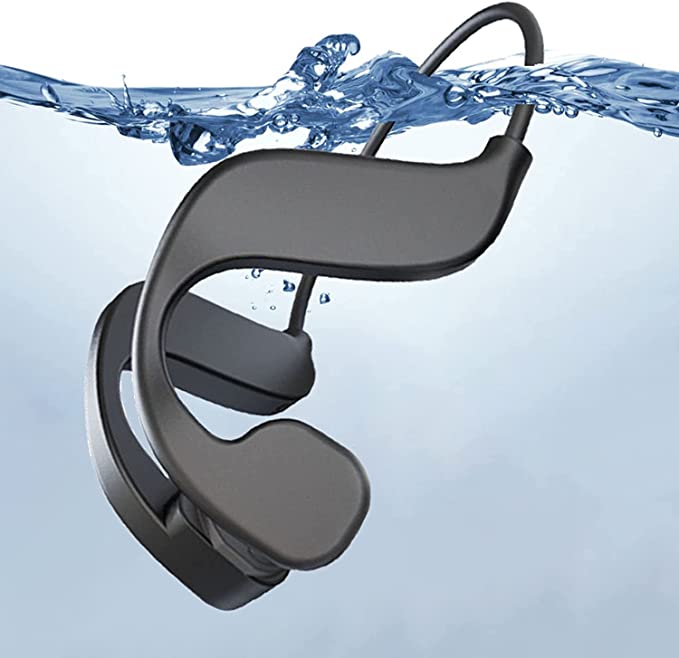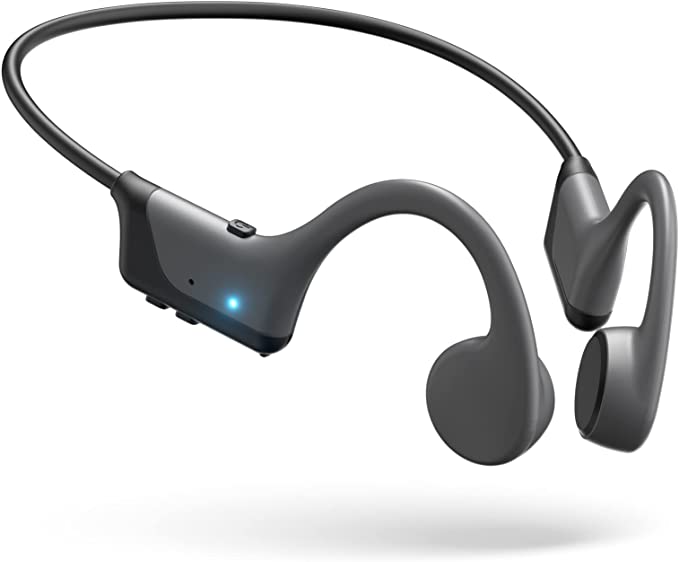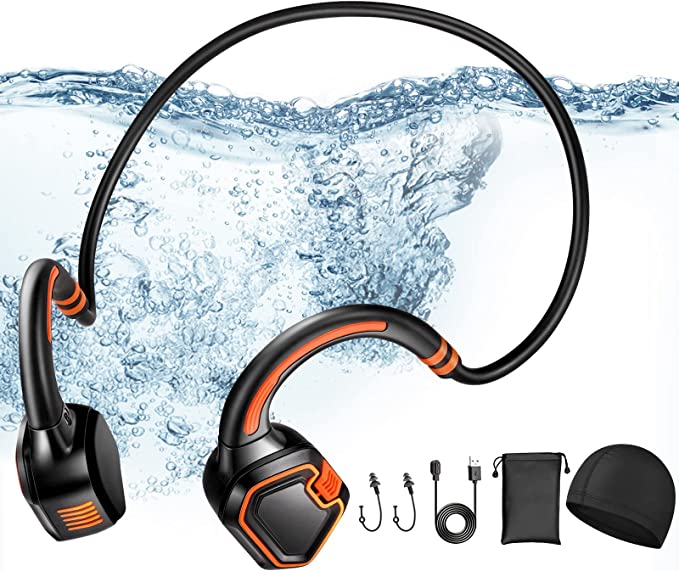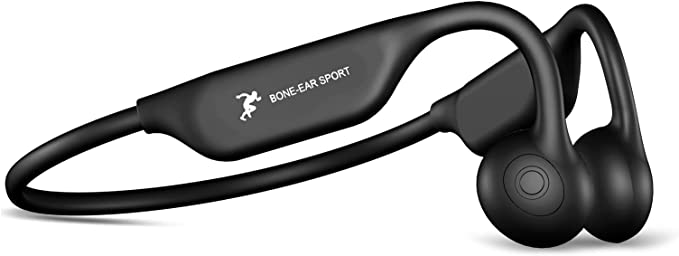Wigfar Wig-11 Bone Conduction Headphones: The Science of Hearing Differently
Update on May 30, 2025, 6:41 a.m.
In the grand theatre of our daily lives, sound is an omnipresent narrator, an emotional conductor, an invisible yet profoundly influential force. We immerse ourselves in its currents – through music that moves our souls, podcasts that ignite our minds, and conversations that weave the fabric of our connections. Traditionally, our personal gateways to these auditory worlds have been headphones and earbuds that, while offering sanctuary in sound, often erect walls, isolating us from our immediate surroundings, sometimes at the cost of comfort, or even safety. Imagine jogging down a bustling city street, lost in a power anthem, yet blissfully unaware of an approaching cyclist, or an office worker needing to collaborate seamlessly while still enjoying background focus tunes. These everyday scenarios highlight a fundamental tension: the desire for personal audio immersion versus the need for environmental awareness and unencumbered ease.
But what if there was a different way to listen? A method that whispers secrets directly to our senses, bypassing the conventional routes? This isn’t a flight of science fiction, but an introduction to the intriguing principle of bone conduction – a technology with historical echoes and a distinctly modern beat. Today, we explore this fascinating auditory pathway through the lens of a product designed to embody its unique advantages: the Wigfar Wig-11 Bone Conduction Headphones. These are not merely an alternative to conventional earpieces; they represent an invitation to experience sound, and the world, in a refreshingly open and integrated manner.

Echoes from the Past, Science of the Present: Unraveling Bone Conduction
The concept of hearing through vibrations transmitted via our bones is not a recent invention. Legend has it that Ludwig van Beethoven, as his hearing tragically waned in the late 18th and early 19th centuries, discovered he could still perceive the notes of his piano by clenching a rod in his teeth and pressing its other end against the instrument. This rudimentary yet profound act was a testament to the power of sound conducted through solids, a direct pathway to the inner ear.
To truly appreciate what the Wigfar Wig-11 and similar devices achieve, we must understand the two primary highways our brains use to interpret sound. The most familiar is air conduction. This is how we typically hear the world: sound waves travel through the air, are funneled by our outer ear into the ear canal, causing the eardrum to vibrate. These vibrations are then amplified by the tiny bones of the middle ear (the ossicles – malleus, incus, and stapes) and transmitted to the fluid-filled cochlea in the inner ear. Think of this as sound taking the main aerial highway into your auditory processing center.
Bone conduction, on the other hand, is like a secret, subterranean tunnel. Instead of traveling through the ear canal and middle ear, vibrations are applied directly to the bones of the skull – typically the cheekbones (zygomatic arches) or the mastoid bone behind the ear. These vibrations travel through the bone, causing the fluid within the cochlea to move, stimulating the same delicate hair cells that are activated by air-conducted sound. These hair cells convert the mechanical vibrations into electrical signals, which are then sent along the auditory nerve to the brain, where they are interpreted as sound. Essentially, bone conduction bypasses the outer and middle ear, delivering the auditory information straight to the “sound-decoding center.”
This principle has been a cornerstone in audiology for decades. Bone Anchored Hearing Aids (BAHAs), for instance, are medical marvels that utilize a small titanium implant in the skull. A sound processor attaches to this implant, transmitting vibrations directly to the bone, offering a vital hearing solution for individuals with conductive hearing loss (where the outer or middle ear cannot effectively transmit sound) or single-sided deafness. The journey of bone conduction from such critical medical applications to everyday consumer technology like the Wigfar Wig-11 is a fascinating story of innovation making specialized science accessible to all.

The Wigfar Wig-11 Deconstructed: Where Innovation Meets Ear-Opening Experience
Wigfar, a brand established in 2016, articulates a vision centered on sports enthusiasts and music lovers, aiming for an experience that is “safe, high-quality and efficient.” The Wigfar Wig-11 bone conduction headphones are a direct manifestation of this philosophy, designed to integrate the unique properties of bone-conducted audio into a user-friendly and activity-ready package. Let’s delve into the core features and the science that makes them tick.
Feature Deep Dive 1: Embracing Your World – The Liberation of Open-Ear Design.
- What It Is: The most defining characteristic of the Wigfar Wig-11, and bone conduction headphones in general, is their open-ear design. Unlike traditional earbuds that plug the ear canal or over-ear headphones that cup the entire ear, these headphones rest gently on the cheekbones, just in front of the ears. Your ear canals remain completely unobstructed.
- Why It Matters (The Science): By delivering sound via vibrations through the bones, the need to block or cover the ear canal is eliminated. This allows ambient sounds from your surroundings – traffic, conversations, nature sounds, public announcements – to reach your eardrums naturally and simultaneously with the audio from the headphones. This isn’t about noise cancellation; it’s about noise integration and situational awareness. From a comfort perspective, it means no pressure inside the ear canal, reduced ear fatigue for some users, and better ventilation, which can be particularly welcome during exercise or in warm weather.
- How It Benefits You (User Scenarios & Value): Imagine cycling through city streets; with the Wigfar Wig-11, your favorite tunes can provide motivation, but you remain acutely aware of car horns, pedestrian calls, or the whir of an overtaking e-bike – a significant safety advantage. For runners in parks or along trails, it means hearing fellow runners, approaching dogs, or simply the sounds of nature without sacrificing their playlist. In an office environment, you can listen to music or a podcast while still being approachable and able to hear colleagues without constantly removing your earpieces. Even at home, you can enjoy audio while keeping an ear out for the doorbell, a child calling, or a simmering pot on the stove. User feedback often highlights this open-ear awareness as a primary reason for choosing bone conduction, with many praising the newfound ability to “still hear able to hear” and be “aware of my surroundings.”
-
A Little Hint: The beauty of open-ear is also its inherent trade-off. Because your ears are open to ambient noise, in very loud environments, the clarity of the headphone audio might be diminished compared to noise-isolating or noise-canceling headphones. It’s about choosing the right tool for the right environment and priority – awareness over isolation.

Feature Deep Dive 2: The Titanium Touch – Feather-Light Strength, Enduring Comfort. -
What It Is: The Wigfar Wig-11 boasts a “wraparound titanium frame.” This forms the structural backbone of the headphones, arching around the back of the head and positioning the transducers on the cheekbones.
- Why It Matters (The Science): Titanium is a remarkable metal, often lauded in aerospace, medical, and high-performance sporting goods for its exceptional properties. Its low density (about 4.5 g/cm³, significantly lighter than steel) contributes directly to the headphones’ overall light weight (the Wigfar Wig-11 is listed at 5.6 ounces, or about 158 grams), minimizing any feeling of burden during extended wear. Its high strength-to-weight ratio means this lightness doesn’t come at the expense of durability. Titanium is also known for its flexibility and resilience; Wigfar states the frame “can be bent and stretched without deformation,” allowing it to adapt to various head shapes and sizes while maintaining a secure, gentle clamping force. Furthermore, titanium exhibits excellent corrosion resistance, making it ideal for a device regularly exposed to sweat. While less critical for non-implanted devices, many titanium alloys also possess good biocompatibility, reducing the likelihood of skin irritation for sensitive individuals.
- How It Benefits You (User Scenarios & Value): The practical upshot is a pair of headphones that you can often forget you’re wearing. For marathon runners, long-distance cyclists, or even individuals wearing them for an entire workday, this “barely there” sensation, as some users describe it, is a significant comfort factor. The secure fit, facilitated by the titanium frame’s properties, means the headphones stay in place during vigorous activities like jumping, running, or gym workouts, without slipping or requiring constant readjustment. The durability also promises a longer lifespan for the product, even with daily, active use.
- A Little Hint: While flexible, any frame has its limits. Always handle with reasonable care. The “one-size-fits-most” design is generally effective, but extreme head sizes might experience a slightly different fit.
Feature Deep Dive 3: Powering Your Pace – All-Day Endurance and the Swiftness of Type-C.
- What It Is: The Wigfar Wig-11 is equipped with a rechargeable battery stated to provide “8 continuous hours of music, calls, audiobooks, and podcasts.” It recharges via a modern Type-C USB port, with the manufacturer claiming a full charge takes approximately 1-2 hours.
- Why It Matters (The Science): At the heart of this endurance is a lithium-ion (or lithium-polymer) battery, the standard for most portable electronics due to its high energy density, relatively low self-discharge rate, and lack of “memory effect.” Efficient power management, often a feature of the integrated Bluetooth chipset and the device’s overall electronic design, plays a crucial role in maximizing playback time from a given battery capacity. The adoption of USB Type-C is a significant user convenience. This reversible connector standard not only eliminates the frustration of trying to plug in a micro-USB cable the wrong way but also typically supports higher power delivery for faster charging compared to older USB standards, and it’s becoming the universal charging port for a vast array of devices, reducing cable clutter.
- How It Benefits You (User Scenarios & Value): Eight hours of playback is substantial, generally enough to cover a full workday, a long training session, or several shorter workouts throughout the week on a single charge. This means less “battery anxiety.” The relatively quick 1-2 hour recharge time ensures that even if you forget to charge them overnight, a short charging burst during a break can provide enough power for your next activity. The universality of Type-C means you likely already have compatible chargers and cables for your phone or laptop, making it easier to keep the Wigfar Wig-11 powered up wherever you are. User ratings for battery life (4.5/5 from the provided data) suggest general satisfaction with this aspect.
- A Little Hint: Actual battery life will always vary depending on factors like listening volume (higher volumes consume more power), content type, and even ambient temperature. The “8 hours” is typically an estimate under optimized testing conditions.

Feature Deep Dive 4: The Unseen Current – Stable Streams with Bluetooth 5.0.
- What It Is: The Wigfar Wig-11 utilizes Bluetooth 5.0 for its wireless connection to your smartphone, tablet, or other compatible devices.
- Why It Matters (The Science): Bluetooth is a short-range wireless technology standard for exchanging data between fixed and mobile devices. Bluetooth 5.0, when compared to its predecessors like Bluetooth 4.2, brought several key improvements as a standard: theoretically double the data transfer speed (up to 2 Mbps), four times the range (though real-world range is affected by obstacles and interference), and significantly, improvements in how it handles connections, which can lead to more stable audio streams. It also introduced features that paved the way for better support of low-energy devices (Bluetooth Low Energy or BLE), which is crucial for battery-powered wearables. For audio, stable data transmission means fewer dropouts or stutters, and sufficient bandwidth helps maintain audio quality, although the final sound is also heavily dependent on the audio codecs used (like SBC, AAC, aptX – the specific codecs supported by Wigfar Wig-11 are not detailed in the provided data but SBC is a baseline for all Bluetooth audio).
- How It Benefits You (User Scenarios & Value): The “wireless freedom” afforded by Bluetooth is a primary appeal. For an athlete, it means no tangled wires hindering movement. In the office or at home, it allows you to leave your phone charging on a desk while still listening to audio as you move around within a reasonable range. A stable Bluetooth 5.0 connection aims to ensure that your music, podcast, or call doesn’t unexpectedly cut out mid-stride or mid-sentence. The Wigfar Wig-11 also includes an integrated microphone, and the Bluetooth connection facilitates hands-free calling.
-
A Little Hint: While Bluetooth 5.0 offers improved range capabilities, physical obstructions (walls, your own body) and radio frequency interference (from Wi-Fi routers, microwave ovens, other Bluetooth devices) can still impact connection stability and range.

Feature Deep Dive 5: Weathering the Challenge – The Meaning of IP55 Resilience. -
What It Is: The Wigfar Wig-11 is “IP55 Certified Waterproof Rating.” This IP code, or Ingress Protection rating, is an international standard (IEC 60529) used to define the levels of sealing effectiveness of electrical enclosures against intrusion from foreign bodies (like dust) and moisture.
- Why It Matters (The Science): The “IP” is followed by two digits.
- The first digit (in this case, ‘5’) pertains to protection against solid particles. A ‘5’ indicates that dust ingress is not entirely prevented, but it will not enter in sufficient quantity to interfere with the satisfactory operation of the equipment; it offers “dust protection.”
- The second digit (also ‘5’) relates to protection against liquids. A ‘5’ here means the enclosure is protected against water jets projected by a nozzle (6.3mm) from any direction. This implies good resistance to sweat and light to moderate rain.
Products achieve these ratings through careful design of their casings, seals around buttons and ports (though bone conduction headphones often have fewer ports), and the use of water-resistant materials.
- How It Benefits You (User Scenarios & Value): For the intended user – often someone active – an IP55 rating provides peace of mind. You can confidently wear the Wigfar Wig-11 during intense gym workouts where you’ll be sweating profusely, or for a run even if there’s a chance of light rain. It means the headphones are built to withstand the typical moisture encountered in an active lifestyle. User D. Williams, for instance, noted they “held up to the sweat well.”
- A Little Hint: It’s crucial to understand the limits of IP55. It does not mean the headphones are fully waterproof for submersion. They are not suitable for swimming. Exposure to high-pressure water jets or prolonged immersion could still cause damage. Always allow them to air dry thoroughly if they get wet.

Feature Deep Dive 6: Simplicity in Motion – The Elegance of One-Touch Command.
- What It Is: The product description states, “All operations of Wigfar bone conduction headphones are integrated into one button and are mainly realized by the voice function of your device.” This points to a single multi-function button (MFB) for primary controls.
- Why It Matters (The Science & Design Philosophy): From a human factors and usability perspective, especially for a device intended for use during physical activity, minimizing control complexity is often a good design choice. A single, well-placed, tactile button can be easier to locate and operate by feel (“blind operation”) than multiple small, similar-feeling buttons. This reduces cognitive load and allows the user to stay focused on their activity. The integration with the device’s native voice assistant (like Siri or Google Assistant) further extends control possibilities without needing more physical buttons.
- How It Benefits You (User Scenarios & Value): When you’re running or cycling, you don’t want to be fumbling with tiny controls. A single MFB typically handles play/pause, answering/ending calls with a single press, and track skipping or voice assistant activation with double or triple presses or long presses. This means you can manage your audio and calls swiftly without breaking your stride or taking your eyes off your path.
- A Little Hint: Learning the specific press combinations for different functions on a single MFB can take a little getting used to initially, but quickly becomes second nature for most users.

Feature Deep Dive 7: Your Unplugged Anthem – The Liberty of MP3 Mode.
- What It Is: A feature highlighted in the Q\&A section and by at least one user review is an onboard MP3 mode. The seller states, “double-click the power button to turn on/off the TF card mode,” and one reviewer (LiveWithTech) mentioned “internal memory of 16GB,” likely referring to the capacity of a TF card this mode would support.
- Why It Matters (The Technology): This feature essentially turns the headphones into a standalone music player. It implies the Wigfar Wig-11 has the necessary hardware (a TF card slot, though the card itself may or may not be included) and software codecs to decode and play audio files (likely MP3, possibly others like WAV or FLAC, though specifics are not provided) stored on the card. This bypasses the need for a Bluetooth connection to a phone or other playback device.
- How It Benefits You (User Scenarios & Value): The primary advantage is phone-free listening. For runners who prefer not to carry their bulky or expensive smartphones, or for gym-goers who want to leave their phone安全ly in a locker, this is a significant boon. It allows for a more streamlined and focused workout experience, free from notifications or the temptation to check a screen. It also conserves the phone’s battery.
- A Little Hint: Managing music on a TF card usually involves connecting the card (or the device, if it acts as a card reader) to a computer to drag and drop files. The navigation of tracks in MP3 mode via a single button might be more basic (e.g., sequential play, perhaps shuffle if supported) compared to the rich interface of a smartphone music app.
The Bone Conduction Soundscape: A Unique Auditory Canvas
Listening through bone conduction is a qualitatively different experience from traditional air conduction. It’s not just about what you hear, but how you perceive it. Many users report a more “spacious” or “open” sound profile, partly because the sound isn’t being funneled directly into the ear canal, and partly because it naturally blends with ambient sounds. There’s often a tactile component too – at higher volumes or with deep bass frequencies, you can literally feel the vibrations on your cheekbones. Kim Ramsey’s review noted, “The speakers will vibrate your ear bones. And I am only guessing that too much of that can lead to trouble. There is a certain massage that happens within your ear if the sound has alot of bass.”
When it comes to sonic signature, bone conduction headphones generally excel in delivering clear mid-range and high frequencies, making them very good for spoken word content like podcasts and audiobooks, as well as for vocals in music. However, reproducing deep, resonant bass that matches the punch of high-quality in-ear or over-ear headphones is an inherent challenge. The physics of transmitting low-frequency vibrations effectively and pleasantly through bone, without excessive and uncomfortable physical vibration, is complex. The skull itself tends to attenuate low frequencies more than high ones when sound is conducted this way. So, while the Wigfar Wig-11 aims for “premium audio,” users should expect a different bass character – perhaps less impactful but still present – compared to traditional headphones designed for bass-heavy music.
Another phenomenon often associated with bone conduction headphones is “sound leakage” – the emission of sound audible to people nearby, especially at higher volumes. This occurs because the transducers, while designed to vibrate bone, also inevitably cause some vibration in the surrounding air. Manufacturers, including Wigfar with its mention of “sound leakage technology,” continually work on designs to minimize this, often through transducer housing innovations or signal processing, but it remains a factor to be aware of in very quiet environments if privacy is a concern.
Ultimately, evaluating the audio from bone conduction headphones isn’t about a direct, apples-to-apples comparison with audiophile-grade closed-back headphones. It’s about appreciating a different kind of soundscape, one that prioritizes awareness and a unique listening modality, particularly for active use or for those who find traditional headphones uncomfortable or isolating.

Harmony of Worlds: Safety, Comfort, and Sound with the Wigfar Wig-11
The Wigfar Wig-11 Bone Conduction Headphones, as we’ve deconstructed, orchestrate a series of technological features – an open-ear design anchored by a titanium frame, reliable Bluetooth connectivity, decent battery endurance, IP55 resilience, and even phone-free MP3 playback – all in service of a core promise: delivering a personal audio experience that doesn’t demand you disconnect from the world. It’s a solution born from understanding that sometimes, the most valuable sound is the one you didn’t miss while enjoying your chosen audio.
Beyond the specifics of this single product, the rise of bone conduction in consumer electronics speaks to a broader shift in how we think about personal audio. It’s an acknowledgment that listening is not always a solitary, immersive act, but can be an integrated, aware, and comfortable part of our active, multifaceted lives. The choice of how we listen is becoming as important as what we listen to.
The Wigfar Wig-11, with its accessible price point (especially when discounted, as noted in the source material) and a feature set geared towards activity and awareness, serves as a compelling entry point into this different way of hearing. It invites us to reconsider our relationship with sound, to explore an auditory experience where our personal soundtrack and the symphony of our surroundings can play in harmony. It’s an invitation to hear differently, and perhaps, to engage with our world a little more fully.



